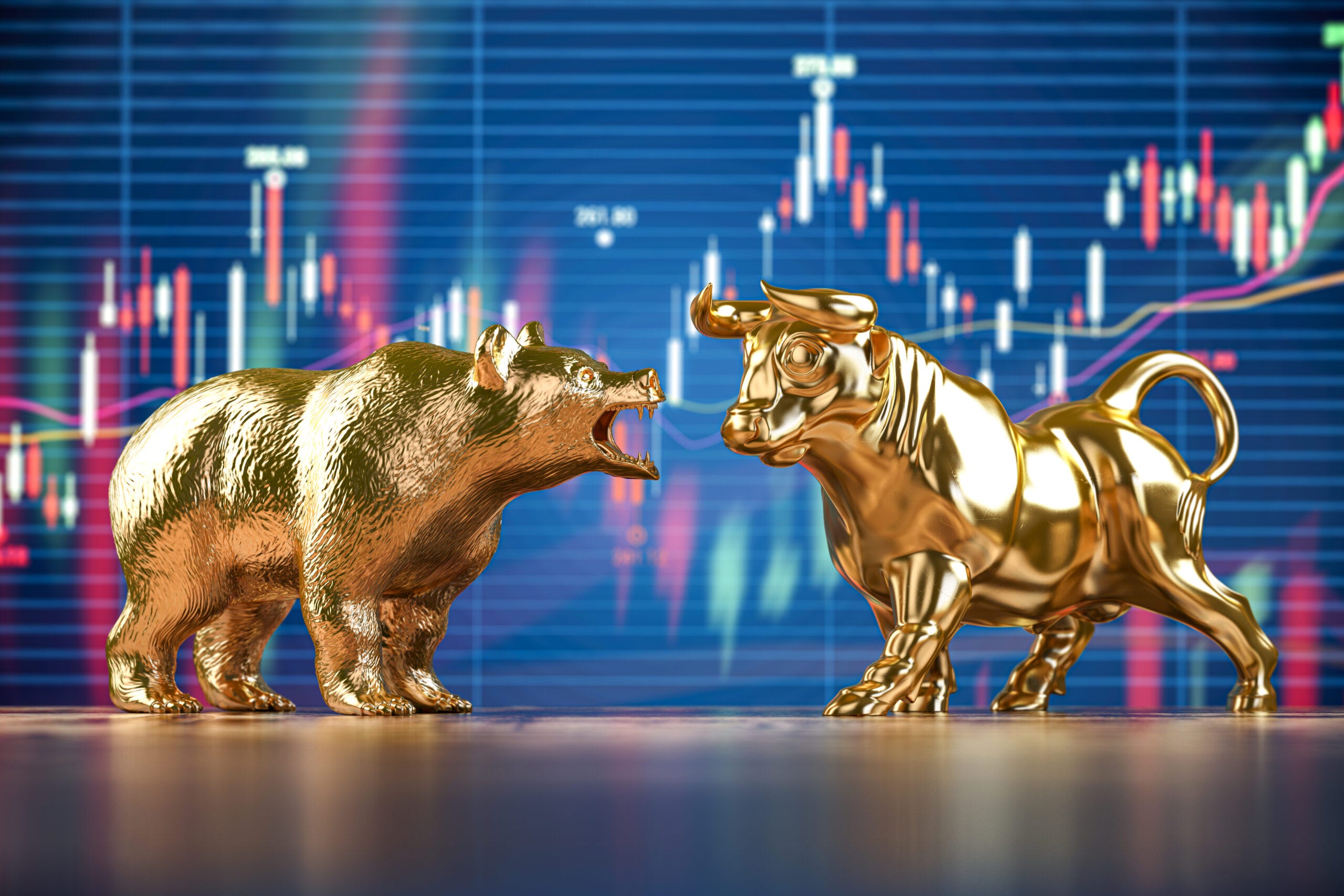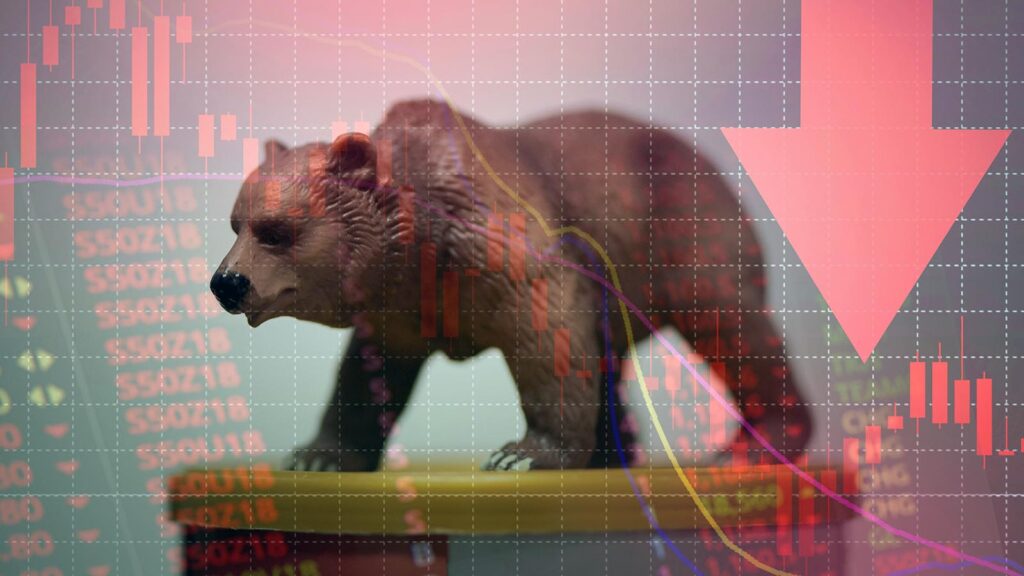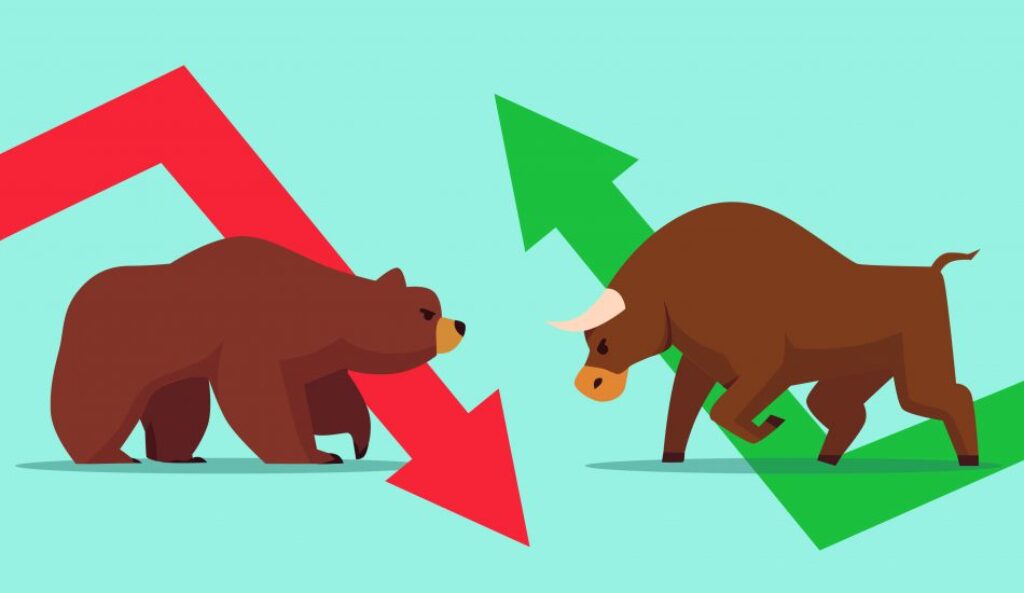
When it comes to the stock market, there are two terms that you’re bound to hear quite frequently: bullish and bearish. But what do these terms actually mean? And how can you tell which one is which? In this blog post, we will explore what distinguishes a bullish or bearish market. We will also provide some tips on how you can take advantage of each type. So whether you’re a seasoned investor or just starting out, this post will be informative for you.
Table of Contents
What is a Bull Market?

Source. academy.binance.com
It is defined as a prolonged period of rising stock prices.
Typically, in order for stocks to be considered in a bull market, the overall market must rise by at least 20% from its previous lows. Bull markets are typically characterized by investor optimism and increased buying activity.
The opposite of it is a bear market, which is defined as a prolonged period of falling stock prices.
What is a Bear Market?

Source: money.howstuffworks.com
There are many factors that can contribute to a bear market, such as economic recession, high inflation, or even geopolitical tensions. When investors lose confidence in the stock market, they may start selling off their holdings, which can further drive down prices.
Bear markets can be difficult times for investors, but it’s important to remember that they are often followed by bull markets. By understanding the difference between the two, you can be better prepared for whatever the market throws your way.
The Difference Between a Bull and Bear Market
There can be numerous factors, but they typically boil down to two things: fundamental factors and technical factors.
Fundamental factors are those that relate to the underlying strength or weakness of the economy. For example, if a country’s GDP is growing, this is generally seen as a positive sign and can lead to increased investor confidence (and thus a bull market). Likewise, if a country’s GDP is shrinking, this is generally seen as a negative sign and can lead to decreased investor confidence (and thus a bear market).
Technical factors are those that relate to the actual movement of the stock market itself. For example, if the stock market is consistently hitting new all-time highs, this is generally seen as a positive sign and can lead to increased investor confidence (and thus a bull market). Likewise, if it is consistently hitting new lows, this is generally seen as a negative sign and can lead to decreased investor confidence (and thus a bear market). If you want more information on bullish and bearish sentiment, this article does a good job of explaining it.
How to Know if the Market is Bullish or Bearish?
A bullish market is one in which stock prices are on the rise. This is typically due to high investor confidence, strong economic indicators, and positive corporate earnings reports. In a bull market, buying pressure is strong and stocks tend to trend upwards.
On the other hand, a bearish market is one in which stock prices are falling. This can be caused by factors such as weak economic indicators, negative corporate earnings reports, or high levels of political or geopolitical uncertainty. In it, selling pressure is strong and stocks tend to trend downwards.
So how can you tell if the market is bullish or bearish? There are a few key indicators to look for:
– Stock prices: In a bull market, stock prices will be rising; in a bearish market, they will be falling.
– Its volume: A bullish market is typically characterized by high trading volume (more buyers than sellers); a bearish market by low volume (more sellers than buyers).
– Its breadth: This refers to the number of stocks participating in the overall uptrend or downtrend. In a bull market, breadth will be broad (many stocks rising); in a bearish market, it will be narrow (fewer stocks rising).
– Its momentum: This is the rate at which stock prices are rising or falling. In a bull market, momentum will be positive (prices rising at an accelerating pace); in a bearish market, it will be negative (prices falling at an accelerating pace).
Examples of a Bullish Market
- When the stock prices of a company are consistently increasing over a period of time, this is known as a bull market.
- When the overall economic conditions are good and people are confident about the future, this creates a bull market.
- When there is high demand for a particular commodity or stock, it results in a bull market.
Some examples of a bullish market are:
– A stock market where prices are rising.
– A real estate market where prices are increasing.
– A cryptocurrency market where the price of Bitcoin is going up.
Examples of a Bearish Market

Source: unsplash.com
A bearish market is one where the price of assets are dropping and expectations are for them to continue to fall. This can be caused by a number of factors including economic recession, high interest rates, political instability, or natural disasters.
Some recent examples of bearish markets include the 2008 global financial crisis and the 2020 COVID-19 pandemic. In both cases, there was a sudden and sharp decrease in asset prices which led to widespread panic and selling. This resulted in further declines in prices as investors sought to get rid of their assets before they lost even more value.
Bear markets can be difficult to navigate as it can be hard to know when to buy or sell. However, understanding what factors are causing the market to decline can help you make better decisions. It is also important to remember that while bear markets can be scary, they eventually come to an end and the prices of assets will start rising again.
Conclusion
When it comes to investing, it’s important to understand the difference between a bullish and bearish market. First one is characterized by optimism and an expectation of rising prices, while the second one is marked by pessimism and an expectation of falling prices. By understanding which type of market you’re in, you can make more informed investment decisions.








